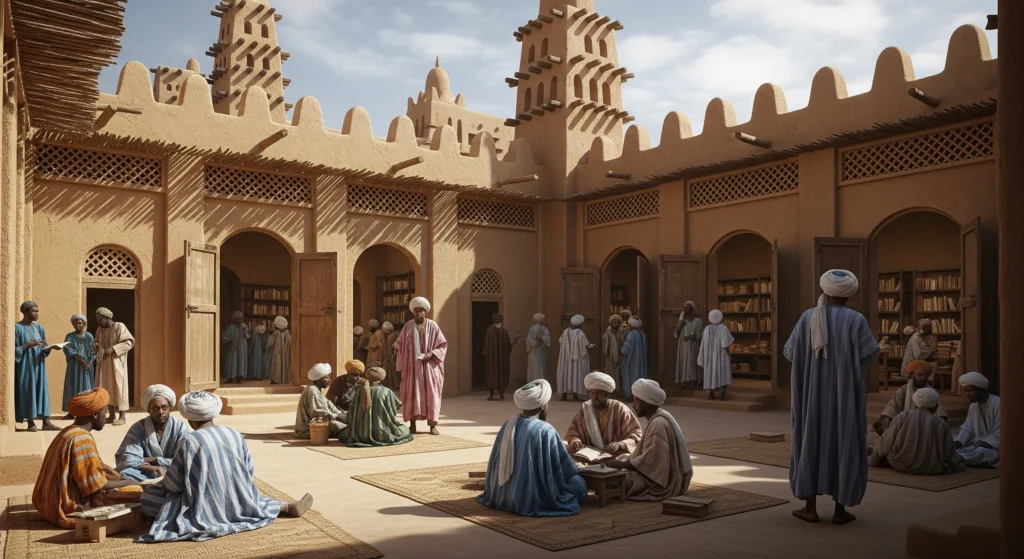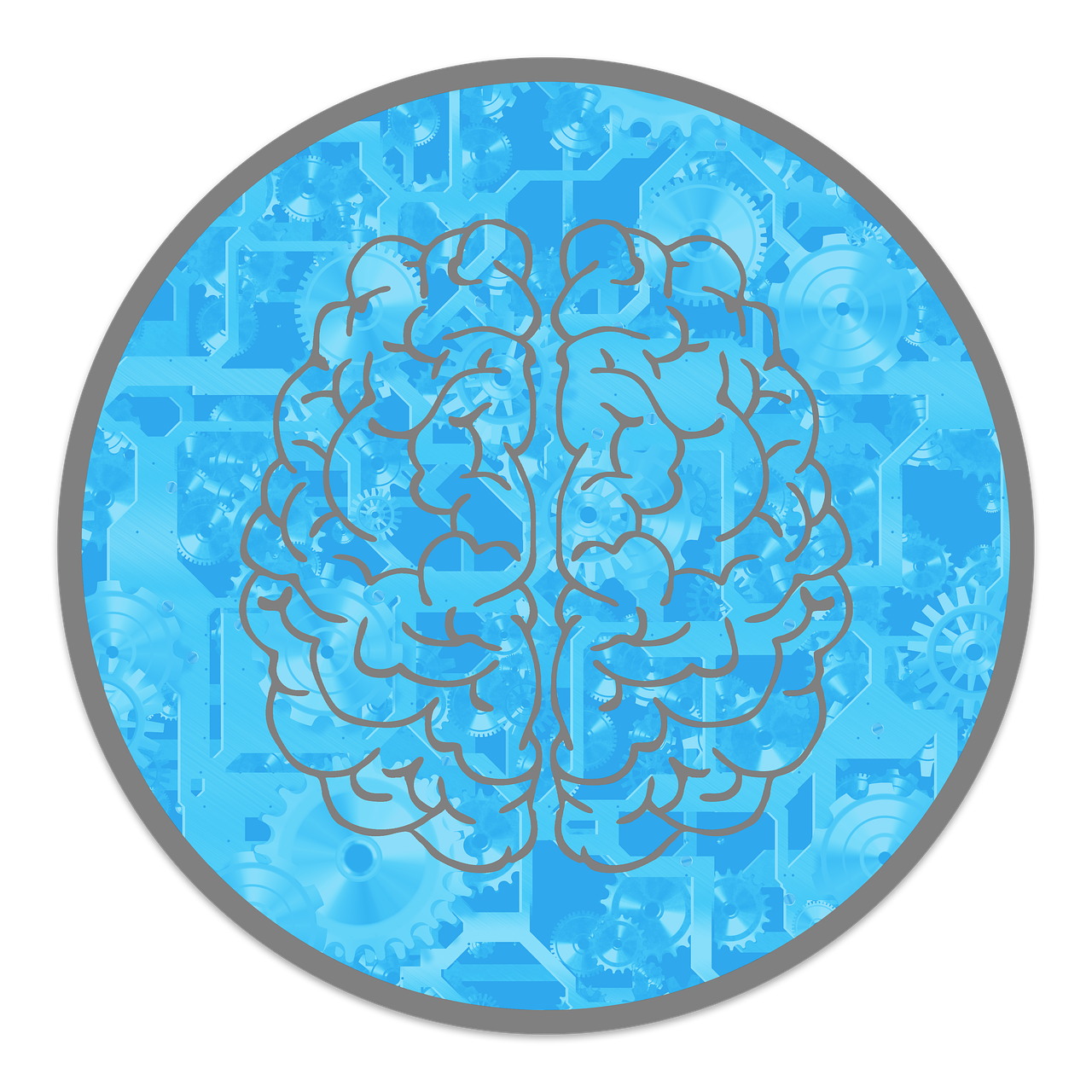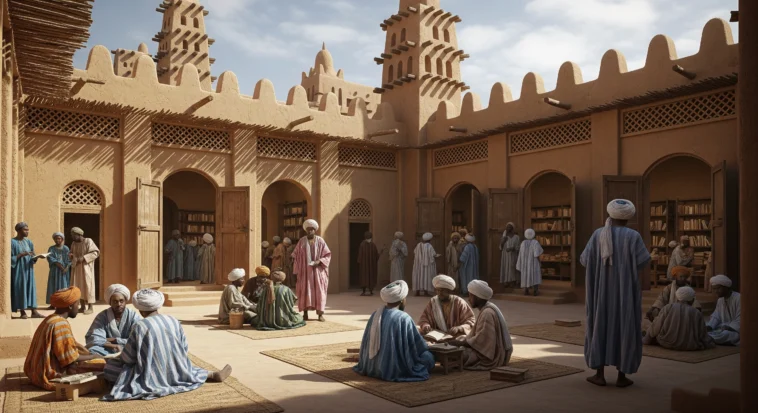
Far from being just a dusty desert outpost, Timbuktu was once a world-famous hub of knowledge — kind of like the Harvard or Oxford of medieval Africa.
It started as a small trading stop, but soon it became the place where scholars from all over the Islamic world came to study, debate, and share ideas.
Its rise wasn’t random — it happened because trade, faith, and curiosity collided in the perfect spot.
Timbuktu’s story proves that Africa had thriving centers of learning that rivaled Europe’s, and it blows up the old stereotype that medieval Africa lacked advanced education or culture.
The Foundation of Learning: Strategic Location and Early Development
Timbuktu became a brainy powerhouse thanks to its perfect location — right where Saharan desert routes met the Niger River.
Founded around 1100 CE by Tuareg nomads, it first blew up as a trading hotspot where merchants swapped gold, salt, and stories.
But it wasn’t just goods that came in — scholars traveling with caravans brought books, ideas, and teaching traditions.
Over time, Arab, Berber, and African thinkers mixed their knowledge, creating a melting pot of wisdom.
This cultural mash-up turned Timbuktu into a place where curiosity thrived and scholars from everywhere wanted to be.
The Rise of Sankore University: Africa’s Medieval Harvard
At the heart of Timbuktu’s brainpower was Sankore University, basically Africa’s version of Harvard in the Middle Ages.
Started around the 1100s by Berbers, it wasn’t just a mosque — it was a full-on learning hub where religion met science, math, medicine, law, and literature.
Thanks to support from locals, including a Tuareg woman from the Aghlal tribe, Sankore grew huge.
At its peak, it had 180 schools and 15,000–25,000 students, attracting scholars from across the Islamic world.
Students not only learned from books but also created manuscripts and engaged in commerce.
Sankore wasn’t just big; it was smart.
Its international, multi-subject approach made it one of the most impressive universities on the planet — proving West Africa was a center of global knowledge long before Europe caught up.
The Golden Age: 15th and 16th Century Academic Prosperity
The 15th and 16th centuries were Timbuktu’s golden era — imagine a city buzzing with scholars, books, and ideas everywhere you looked.
With Sankore University and other madrasas thriving under the stable Songhai Empire, learning was a big deal.
Under Askia Muhammad, Timbuktu drew scholars from Egypt, Syria, and beyond.
Some even taught while making the Hajj to Mecca!
This global exchange made Timbuktu a respected hub in the Muslim world.
Word of Timbuktu’s brilliance spread far — European courts, Middle Eastern cities, and travelers all heard stories of this desert city packed with scholars, books, and culture.
It was a place where intellectual greatness literally defined the city.
The Manuscript Tradition: Preserving Knowledge for Posterity
One of Timbuktu’s coolest achievements wasn’t just its universities — it was the massive collection of manuscripts that scholars produced and traded like treasure.
We’re talking hundreds of thousands of books created over centuries, from the Ghana, Mali, and Songhai empires.
These manuscripts weren’t just religious texts — they covered everything:
- Religion: Quranic commentaries and Islamic law
- Science: Math, astronomy, medicine, and natural philosophy
- Humanities: History, poetry, literature, and biographies
- Social sciences: Law, ethics, and politics
- Practical stuff: Trade tips, farming methods, and crafts
The book trade was huge — some rare manuscripts were actually worth more than gold or slaves!
This meant scribes and scholars poured their best work into these texts, making Timbuktu a city where learning literally paid off and attracted curious minds from across the world.
Educational Methods and Academic Standards
Timbuktu wasn’t just about cool books — its schools ran like a medieval brain gym.
The teaching methods were super advanced, mixing Islamic learning with local African knowledge, and the standards were no joke.
Students moved through levels like a game with increasingly tough levels:
- Elementary: Learn to read, write, do basic math, and recite the Quran
- Intermediate: Grammar, logic, rhetoric, and some intro science
- Advanced: Dive deep into a chosen subject with master scholars
- Research and teaching: Become a scholar yourself and contribute new knowledge
Exams weren’t just written tests — students defended their ideas in oral exams, public debates, and dissertations.
Only after proving themselves at every stage could they move up or start teaching others.
Basically, you had to earn your brain creds!
International Connections and Scholarly Exchange
Timbuktu wasn’t learning in isolation — it was plugged into a global brain network.
The city connected North African and sub-Saharan African knowledge, making it a hotspot for exchanging ideas across continents.
Scholars regularly traveled between Timbuktu and major learning hubs like Cairo, Fez, Cordoba, and Baghdad.
Think of it like the ultimate group chat of medieval brains, sharing the latest discoveries and debates.
Even the Hajj to Mecca doubled as a scholarly road trip. Timbuktu scholars studied and taught along the way, bringing back fresh ideas and boosting the city’s reputation as a world-class center of learning.
It was like mixing religious duty with an intellectual adventure — how cool is that?
Economic Foundations of Academic Success
Timbuktu’s brains didn’t thrive on ideas alone — money made the magic happen.
Being a major trading hub meant the city had the cash to support thousands of scholars, students, and schools without anyone having to scrape by.
Here’s what fueled the wealth:
- Salt and gold trade: These were like Timbuktu’s version of high-tech stocks — super valuable and in huge demand.
- Strategic location: Right where desert routes met the Niger River, making it a natural trading crossroads.
- Commercial services: Banking, currency exchange, and support for merchants kept the economy humming.
- Manuscript trade: Books weren’t just knowledge — they were luxury items people paid top prices for.
- Skilled crafts: High-quality goods for local and international markets added extra wealth.
Thanks to this economic backbone, scholars could focus fully on learning instead of worrying about survival.
Basically, Timbuktu’s trade riches made it possible for the city to become a mega center of knowledge.
Legacy and Modern Relevance
In 2012, Timbuktu faced a huge blow when extremists tried to destroy its priceless manuscripts.
But here’s the epic part: brave locals smuggled over 300,000 manuscripts out of the city, hiding them in backpacks, crates, even on donkeys and canoes.
They risked everything to save Africa’s written history — talk about real-life superheroes!
These efforts show just how much the people of Timbuktu valued knowledge.
Today, these manuscripts still teach us about medieval African scholarship and smash the old myths that Africa lacked advanced learning.
Modern researchers and institutions around the world are digitizing and studying these texts, uncovering mind-blowing insights about math, science, literature, and philosophy from centuries ago.
Timbuktu’s legacy proves that Africa’s intellectual fire has been burning bright for a very long time.
Conclusion: Lessons from Timbuktu’s Academic Legacy
Timbuktu’s rise from a simple trading post to a world-class learning hub shows what it takes for knowledge to thrive: smart location, money, stability, cultural openness, and a real love of learning.
Its story flips the script on old myths about medieval Africa and proves the continent made huge contributions to science, literature, and religion — showing a peaceful, open vision of Islam through its manuscripts.
Today, Timbuktu reminds us that knowledge can cross borders and cultures.
Its legacy inspires us to protect cultural treasures, value education, and keep learning alive.
Six centuries later, Timbuktu still teaches a timeless lesson: when people care about knowledge, amazing things happen.



